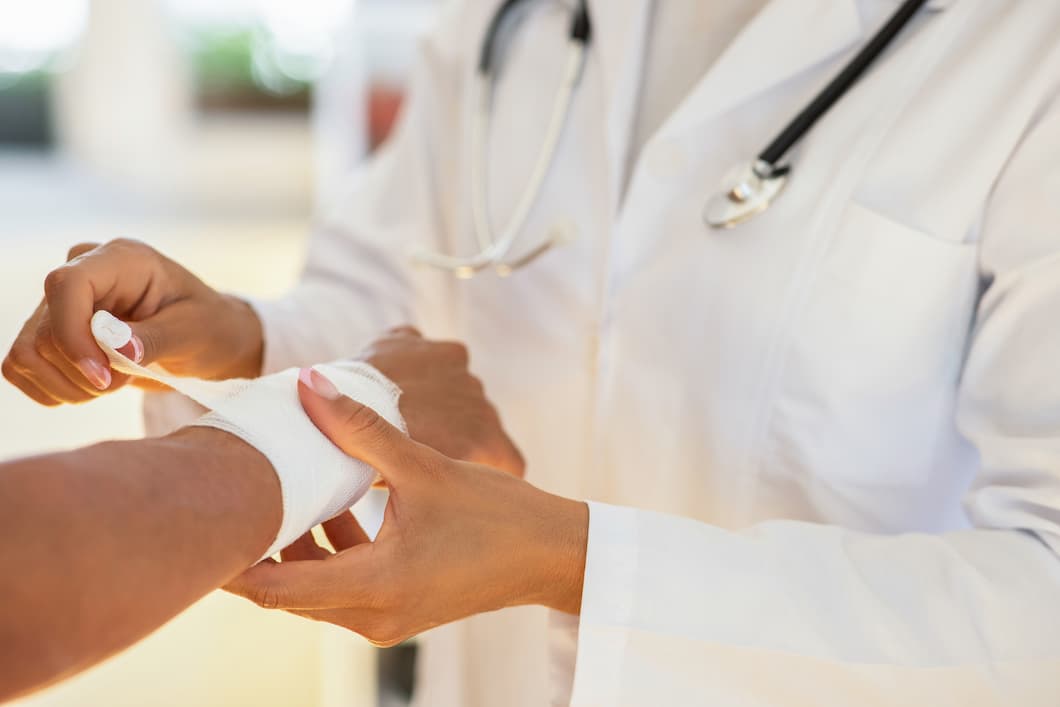Wound Care Center in Topeka, KS
The Advanced Wound Center at the University of Kansas Health System provides patients in northeast Kansas with exceptional wound care services. Our specialists provide care for many types of wounds and ulcers, including acute, non-healing, and chronic wounds. Using advanced technology, our doctors offer treatments like hyperbaric oxygen therapy and bioengineered skin substitutes to help you heal. Our Advanced Wound Center delivers superior healing rates and top-rated patient satisfaction scores, so matter what type of wound care you require, our doctors will have your health and comfort at the forefront of everything we do.

Types of Wounds We Treat
Our doctors use leading-edge treatment to provide care for the following types of wounds:
- Arterial ulcers
- Chronic refractory osteomyelitis
- Complex soft tissue wounds
- Diabetic wounds
- Infected wounds
- Non-healing surgical wounds
- Pressure ulcers
- Soft tissue radionecrosis
- Traumatic wounds
- Venous stasis ulcers
Please call us for more information about the types of wounds we treat. You can find our Advanced Wound Center at Mulvane Medical Plaza, 634 SW Mulvane, Suite 100, adjacent to the St. Francis Campus.
Wound Treatments We Provide
We provide a wide variety of treatments to care for wounds, including:
- Advanced wound dressings
- Bioengineered skin substitutes
- Compression wrapping
- Debridement
- Easy casting
- Hyperbaric oxygen therapy
- Laboratory studies
- Negative pressure wound therapy
- Radiologic imaging and vascular studies
- Total contact casting
Hyperbaric oxygen therapy
Hyperbaric oxygen therapy (HBOT) may be needed as part of a patient’s individualized treatment plan. HBOT y is primarily used for the treatment of conditions that result from lack of oxygen in the tissues, such as diabetic wounds, radionecrosis — which can be a result of radiation therapy — severe infections, and traumatic crush injuries.
While lying in a large, acrylic chamber, patients breathe 100% pure oxygen as it is circulated to the chamber at pressure levels two and three times greater than normal. The high pressure causes the lungs and body tissues to absorb the oxygen in a shorter amount of time, in greater amounts, and the oxygen boost to the tissues promotes healing.
Because it promotes blood flow and increases oxygen circulation, hyperbaric oxygen therapy also has proven to be effective in treating decompression sickness from scuba diving injuries, carbon monoxide poisoning, chronic bone infections, complications arising from prior radiation treatments, traumatic wound injuries to bone, muscle or blood vessels, peripheral vascular disease, gas gangrene infections, compromised skin grafts, reattachment of limbs and surgical incisions.
